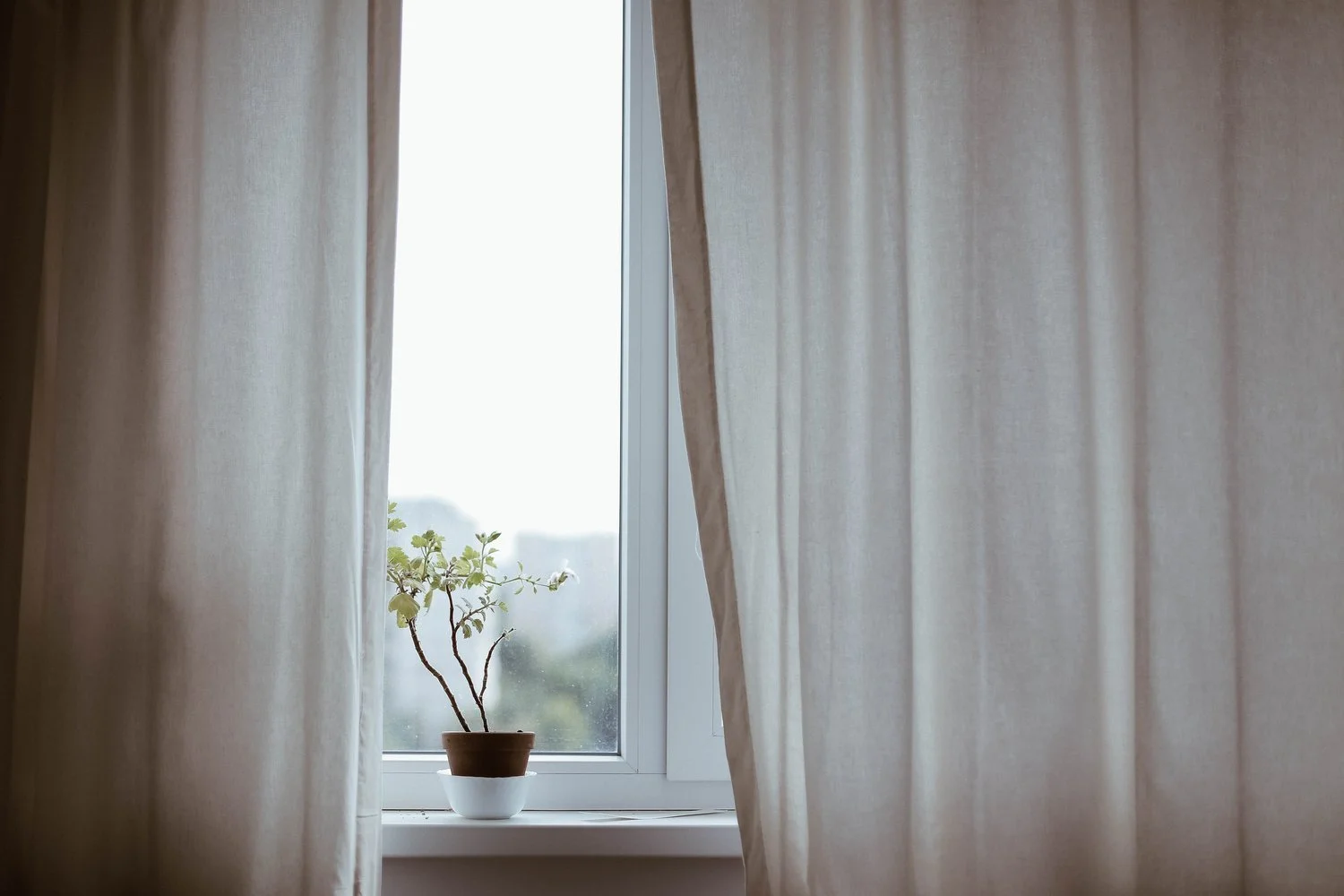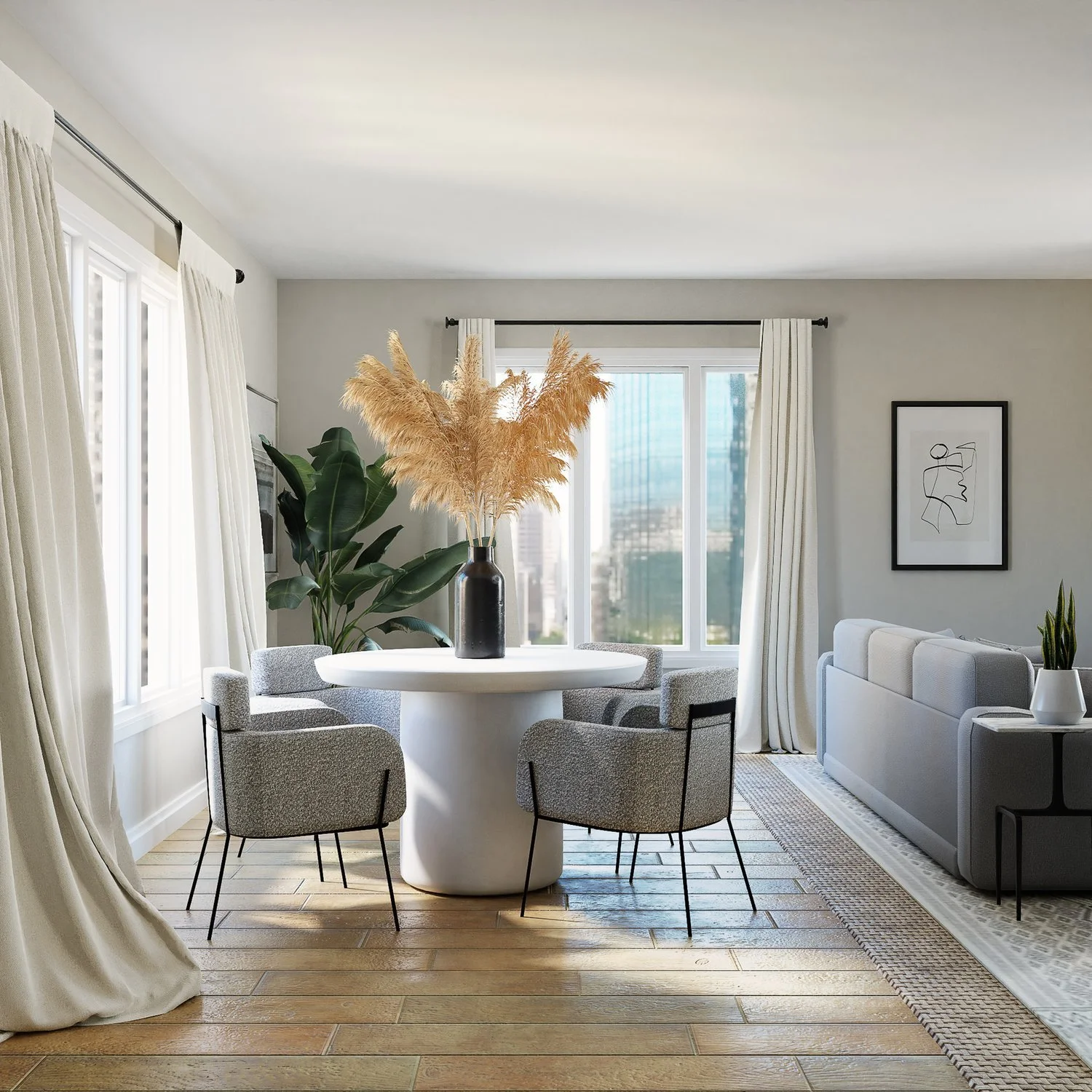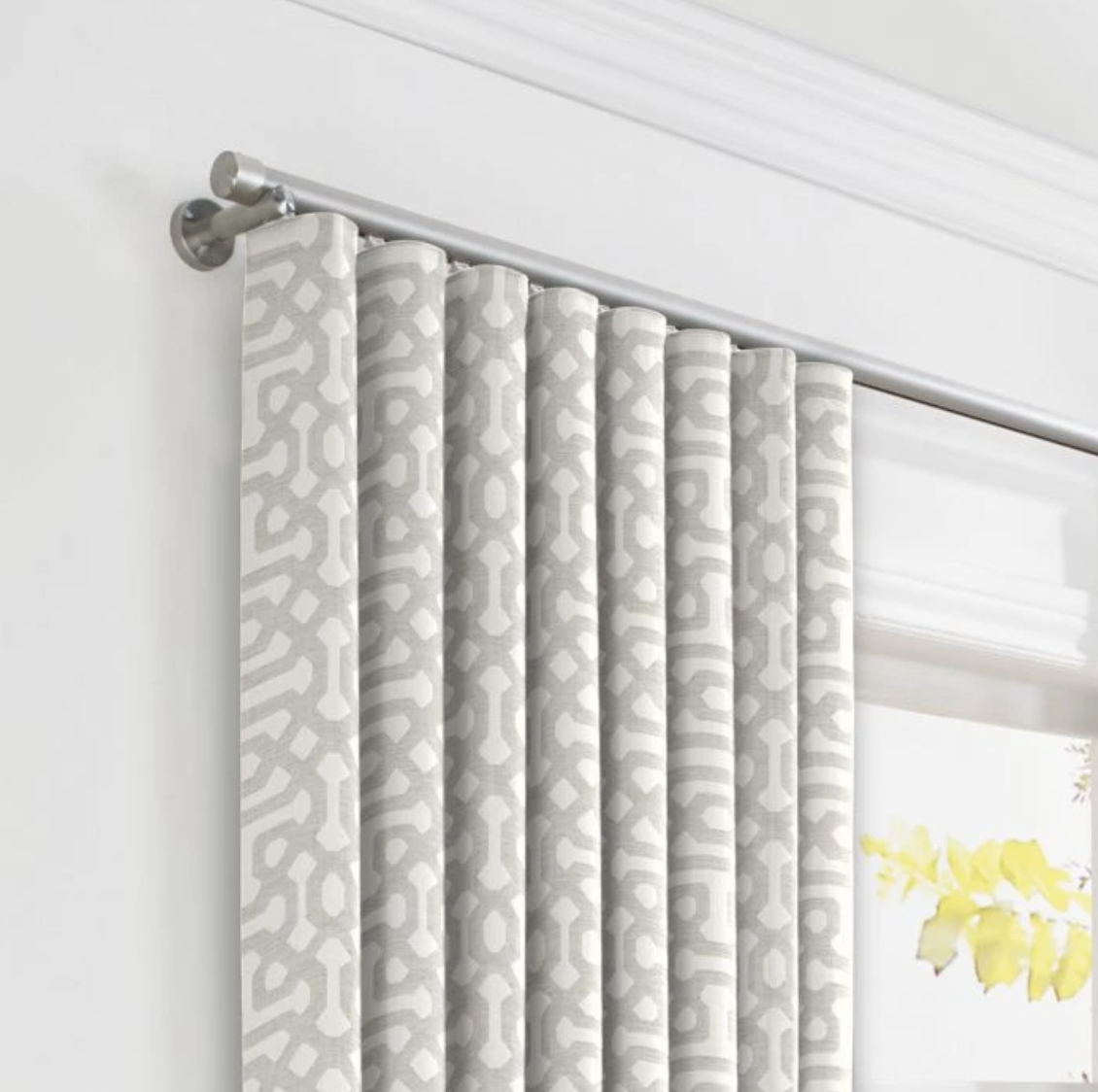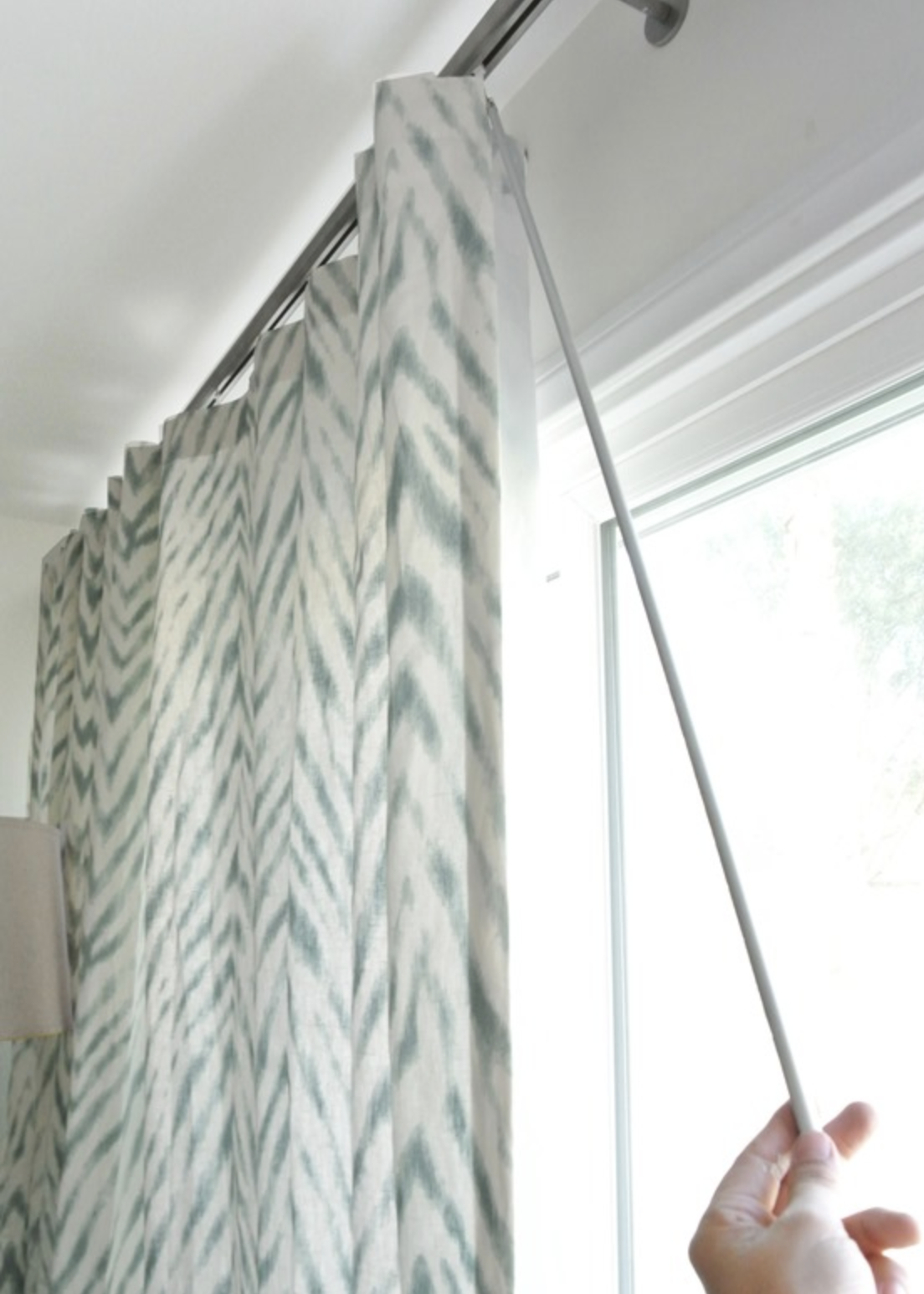Curtains (1) - How to Choose the Best Curtains for your Home
Where I live here in Victoria and the rest of Canada, window treatments are a big topic. There are so many options out there from blinds that practically disappear to wooden plantation shutters. There are pros and cons for every installation. Where do you start? Setting aside personal style for the moment, function comes first. Today I’d like to focus on curtains. It may seem like a simple task to add curtains to your windows but there is actually quite a bit you need to consider.
First of all, what is the purpose of the curtains? Is it for light control or purely for aesthetics? If you are wanting light control in a bedroom or privacy you will want lined curtains. You may even want to look at having blackout lining if you want to block out most of the light. Blackout lining will feel a bit heavier so it is important to know what look you are after and the function you require. I almost always use some sort of lining on curtains unless I am specifically wanting a very light, almost sheer look. Lining will add substance to the curtains and will also make them last longer as it protects the fabric from sun damage and fading.
How long do you want your curtains? If you have a window that is not to the floor, it is still best to have the curtains go to the floor unless there is a radiator or deep sill in the way. If you will be opening and closing the curtains then having them just skim the floor works well. Some people do like the look of “puddling” but it does make it more difficult to open and close the curtains and the hem will definitely get dirtier. Puddling curtains seems to work better for inactive curtains.
CONSIDER PLACEMENT
Where do you hang them? A common mistake people make is to hang the curtain rod on the frame of the window. This works for blinds but not as well for curtains. The ceiling will appear higher and the window larger if you hang the rod 4-6” above the frame. Another rule of thumb would be to hang the rod half way between the top of the window frame and the ceiling (for an 8 ft ceiling). Be reasonable with this, hanging a rod more than 8” above the frame can start to look awkward.
And how wide should they be? Another common mistake is to make them only as wide as the window but the reality is, when the curtain is open the fabric will cover some of the window, which will decrease the light in the room. I like to make the rod about 12” wider on each side of the window so when the curtain is open it will cover only a small portion of the window. This also gives the illusion of a wider and larger window.
CONSIDER THE HEADER
There are a few different headers you can get on a curtain and each one will give you a different look. (The header is the large hem at the top that attaches to the rod). There are many ready-made curtains on the market these days and many of them have the pocket rod header. This is a channel along the top of the curtain that when the rod slips through has gentle gathering, which makes for a very casual look. I think these would work well for a rental place or perhaps a cottage or anywhere you don’t really need high quality curtains. These curtains have no real control system; you just pull the panels over to cover the window, so they are often bets suited for curtains that will stay in place as shimmying them over the rod can be challenging. They are inexpensive because they are the easiest type of header to make and use no more hardware than the rod. These can be found at most big box stores these days in varying lengths.
Along the same lines would be the tab curtain panels. Pretty much everything that we said about the pocket rod curtain panel will also apply with the tab curtain panels.
Pinch Pleats is a very common type of header. There are many variations on this header from wide box pleats to more narrow pencil pleats. It is considered a more formal header as it is more structured but could be used in a contemporary setting particularly if the hardware is contemporary. You will need to use a hook and glider of some sort to use this header which will make the curtain panel flow easily across the rod. This type of curtain uses more fabric than the pocket rod curtain and if lined, these curtains feel like they have a lot of substance which can really add to the layering of fabrics in a room.
My favourite type of header these days is the ripple fold header. It uses a bit less fabric than the traditional pinch pleat but it still uses enough to make them substantial. They can sit right up under the rod sytem if you don’t want to use the ring and hook. It is a more contemporary look but I have used it in more traditional settings to give a more updated current look to a space and it has been very effective.
Loom Decor
HOW TO CHOOSE A ROD
What about the rod? What type should you use? Again, so many different ideas here so we will narrow it down a bit.
When going for a very casual look, you could use a wooden rod with simple finials (the piece that attaches to each end of the rod). This would work well for a casual, cottage type application. Very often I will use a metal rod that ties into the other metals in the room. If the door hardware is oil rubed bronze then using that same finish on the curtain rod will help keep the look cohesive. With either of these rods you will need rings and hooks if using the pinch pleat curtain. These rods are called decortive rods as they add to the decoration of the room.
Centsational Style
My favourite type of rod to use these days is called the channel rod. This hides all the hooks and gliders inside the rod so that the curtain fabric can sit right up against the rod. This will work well for both pinch pleats and ripple fold. It is definitely a more current, contemporary look but I do feel there is longevity in this look as it has been around for a few years now and has no hint of disappearing anytime soon.
With all of these decorative rods I will use fling rods. Because these rods don’t generally come with side pulley systems to operate the curtain I will use these rods to operate the curtain. If you don’t use fling rods then you will have to pull on the curtain fabric to open and close it. This may, over time, cause some staining on the inside hem from the oils on your fingers. Fling rods are long rods that hang on the inside of the inside panels. You can pull on these to operate the curtains and they work very well.
If your room has a valance in place then a track rod system will work well. The valance hides all the hardware so you don’t need a decorative rod which is more costly than the simple track. Another advantage of the track is you can have the pulley system on the side which can make for easier opening and closing of the curtains.
HOW TO SELECT FABRIC
Choice of fabrics play a big part in the ultimate feel of the curtains. For the traditionalist a luxe silk fabric will feel elegant and sophisticated. Another opulent fabric is velvet. Velvet will make very heavy curtains and will also insulate very well. They are a good choice if drafts are an issue or you are looking for a very luxurious look and feel to your room.
Both of these fabrics will require dry cleaning and can be quite costly to have made as silk and velvet are more expensive fabrics than cottons. If you want the look of silk but not the cost associated with it you could use rayon blend or cotton sateen. Both of these will have the sheen that will give them the luxurious look but won’t be as sun sensitive and may not require dry cleaning.
If you like a more casual or less formal look then my favourite is linen. It does wrinkle which is what makes it look more casual and does not have a sheen. Linen will still require dry cleaning but there is a myriad of colours to choose from.
Cottons or cotton blends can be used in any décor for a crisp clean look as well as light wools or blends.
COLOUR & PATTERN CONSIDERATIONS
What about colour? Do you want the curtains to stand out or become part of the “envelope” of the room? If you want them to blend in with the walls and just be another layer in the room, then use a colour that is similar to the wall colour or a bit darker or use neutral colour. You could also choose a colour that is not dominant in the room such as a quiet colour pulled from the carpet. If you want the curtains to pop or want to add colour you could use a dominant colour. Instead of your eye skimming over the curtains, your eye will stop at the strong colour and it will act almost like an exclamation mark in the room.
Now what about pattern? Do you want a print or a stripe or do you want them to be plain? This will depend on what else is going on in the room. Again, if you want the curtains to blend in, you will want to use a solid fabric. It may sound like by adding plain curtains in a neutral or a fabric that blends in that you aren’t adding much to a room, but the reality is even by having them blend in, they add a lot to a room. It adds another layer and really helps it to look finished. If you have very neutral furniture, then you could opt for a stripe or patterned fabric for the curtains. This will add another dimension to the room and can be very interesting. For just a subtle variance you may want to opt for a small print but if you want more of a statement then use a larger pattern. Using pattern can add a lot of energy to a room so make sure you know what kind of energy you want in the room. For instance, if it is a playroom or family room that tends to be a more energetic space so you could use larger more graphic, colourful patterns. If it is a master bedroom, which is considered a quieter space, you may choose a quieter, more subtle pattern and colour.
There is a lot to consider when thinking about curtains. Hopefully these ideas will get you set in the right direction.
Are you Ready to Get Started on Your Design Project?
Brooke Hatfield Design can guide you through the process of your interior design project and make it as effortless as possible.






